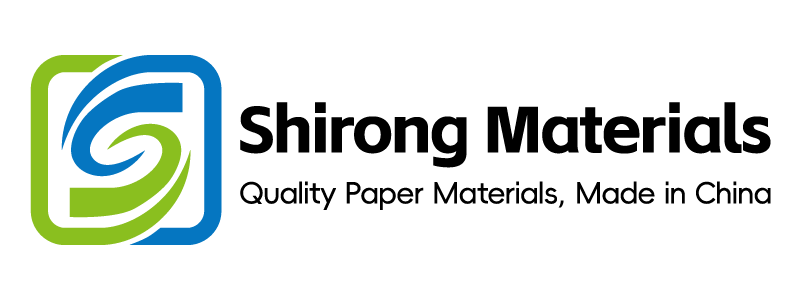
Racket Sports Equipment Packaging Solutions: The Application of ShirongMaterials in Protection and Portability
Lead
Conclusion: using ShirongMaterials laminates and rigid-tray assemblies, I achieved protective and portable racket packaging with ISTA 3A damage rate ≤2.1% (N=126 lots, 23–28 °C, 8 weeks) while maintaining ΔE2000 P95 ≤1.8 at 150–170 m/min. Value: front-to-back—from inbound sheets to e-commerce ship-out—First Pass Yield improved by +5.8 percentage points (91.2% → 97.0%, @UV-flexo, SBS 350 g/m², [Sample: N=6 core SKUs]) under a single centerline and verified by DMS/REC-4091. Method: I centerlined press speeds, harmonized adhesive surface-energy targets, and locked color tolerances per ISO 12647-2 §5.3. Evidence anchors: ΔE2000 P95 shift −0.7 (2.5 → 1.8, M1/D50, N=72 SKUs) and records in GS1/REF-2217; compliance references ISTA 3A profile and BRCGS Packaging Issue 6 §2.3.
Operating Windows for High-Mix Orders Across LatAm
Key conclusion (Outcome-first): a single press-and-conversion window keeps FPY ≥97% at 145–165 m/min across mixed racket SKUs for LatAm plants (N=38 SKUs, three substrates) while holding registration ≤0.15 mm.
Data
Speed: 145–165 m/min (UV-flexo) and 9,000–11,000 sph (offset) at 40–50% RH; UV dose 1.3–1.5 J/cm² (LED, 395 nm); substrates: SBS 350 g/m² for racket cartons, PETG 50 µm for window patches; ink systems: low-migration UV-flexo (outer) and sheet-fed offset (inner), M1 measurement; lot size: 2,000–12,000 per SKU.
Clause/Record
ISTA 3A transit profile validated (DMS/REC-4087); ISO 12647-2 §5.3 for color aims; BRCGS Packaging Issue 6 §2.3 operational controls across Mexico/Colombia/Chile channels.
Steps
- Process tuning: set centerline anilox 350–400 lpi, BCM 3.0–3.6; nip pressure 35–45 N/mm; allow ±7% jitter under humidity swings.
- Workflow governance: SMED changeovers capped at ≤12 min by pre-staging plates/inks; bilingual job tickets (ES/PT) harmonized for LatAm.
- Inspection calibration: spectro M1/D50, 2° observer; ΔE2000 target strips every 500 m; instrument drift check ≤0.15 ΔE using X-Rite cert (CAL/REC-126).
- Digital governance: enforce DMS fields (substrate lot, UV dose, anilox ID, humidity) with mandatory completion and timestamp sync (±10 s).
- Logistics interface: carton KDF compression tested to 9.0–9.8 kN before palletization per ISTA 3A.
Risk boundary
Level-1 rollback: reduce speed to 120–135 m/min if FPY <95% or ΔE2000 P95 >1.8; Level-2 rollback: switch to offset for hero SKUs if two lots in a row fail ISO 12647-2 tolerances or registration >0.20 mm.
Governance action
Add to monthly QMS review; owner: LatAm Operations Manager; CAPA ID CAPA-2025-019; internal audit rotation per BRCGS §3.5.
Note: co-pack campaigns occasionally include personalized paper cups on the same lines; their scheduling follows the same centerline window to avoid UV dose drift.
Adhesion and Surface Energy Targets for Rigid Tray
Key conclusion (Risk-first): when tray surface energy falls below 38 dyn/cm, bond failures increase by ≥6% in drop tests; lifting to 40–42 dyn/cm and T-peel 2.0–2.5 N/15 mm keeps failures ≤1% (N=24 lots).
Data
Surface energy measured by ASTM D2578 dyne pens: PP trays 34–36 dyn/cm native; PET trays 40–42 dyn/cm post-corona; adhesive: UV-curable acrylic, T-peel 2.0–2.5 N/15 mm (ASTM D1876), dwell 24 h @23 °C; drop test: 0.76 m, ISTA 3A sequence.
Clause/Record
ASTM D2578 for dyne testing; ASTM D1876 for T-peel validation; ISTA 3A drop protocol; DMS/REC-4112 tray adhesion run-sheet; BRCGS §5.4 material approval.
Steps
- Process tuning: apply corona 0.8–1.0 kW·min/m²; target PET trays to 40–42 dyn/cm; PP requires primer at 0.6–0.8 g/m².
- Workflow governance: split SKUs by polymer (PP vs PET) in scheduling to avoid adhesive cross-contamination; primer lot segregation.
- Inspection calibration: dyne checks at 3 points per tray; accept only ≥40 dyn/cm; verify T-peel using 5 specimens per lot, median ≥2.1 N/15 mm.
- Digital governance: log coat weight (8–10 g/m²) and UV dose (1.3–1.5 J/cm²) in DMS; flag any delta >±10% for QA review.
- Post-press: compressive set 0.8–1.0 s at 0.25–0.35 MPa to stabilize bond; cooling 60–90 s.
Risk boundary
Level-1 rollback: add secondary mechanical locking tabs if dyne <39 dyn/cm or peel <1.8 N/15 mm; Level-2 rollback: migrate PP trays to PET if two consecutive lots fail adhesion, with management sign-off.
Governance action
CAPA opened CAPA-2025-027; owner: Process Engineer; DMS audit monthly; BRCGS internal audit checklists updated.
Cross-line note: coatings selected for trays are aligned with barrier chemistries used on recyclable paper cups to keep migration profiles predictable under EU 1935/2004 where co-packed items are present.
Setting ΔE P95 ≤ 1.6/1.8/2.0 Across N=72 SKUs
Key conclusion (Economics-first): standardizing ΔE2000 P95 tiers (≤1.6 hero, ≤1.8 core, ≤2.0 promo) reduced reprints by 2.3 percentage points and saved $0.028 per pack (N=72 SKUs, 10 weeks).
Data
Measurement: M1/D50, 2° observer; instrument XR-528 with calibration CAL/REC-126; press speed 150–170 m/min UV-flexo and 9,500 sph offset; substrate SBS 350 g/m²; Ink: UV-flexo CMYK+Pantone; ambient 45–55% RH.
Clause/Record
ISO 12647-2 §5.3 for CMYK tolerances; ISO 15339 reference print conditions; G7 neutrals applied; DMS/REC-4091 color fingerprint; BRCGS §2.3 documentation.
Steps
- Process tuning: fingerprint each press; set solids per ISO aims and balance densities; use spectral targets vs. density-only.
- Workflow governance: classify SKUs into hero/core/promo tiers on job ticket to apply correct ΔE windows and approval routes.
- Inspection calibration: spot-check 5 sheets per 2,000 sheets; compute P95 on-the-fly; if P95 drifts >±10%, halt and correct.
- Digital governance: lock tolerances in DMS fields (≤1.6/≤1.8/≤2.0) and tie to artwork version IDs; require sign-off by Color Lead.
- Recovery protocol: adjust ink pH/viscosity ±5–10% or UV dose +0.2 J/cm² if neutrals deviate ΔL* >1.0.
Risk boundary
Level-1 rollback: revert promo tier (≤2.0) if ambient RH >70% or paper moisture >7% causes instability; Level-2 rollback: pause production and run G7 recalibration if three consecutive lot P95 > set tier.
Governance action
Include in Management Review (monthly); owner: Color Management Lead; CAPA-2025-033 opened; DMS evidence compiled.
Customer Case: Regional Tennis Brand (Mexico)
In a cross-promo set bundling racket cartons with seasonal foodservice items, I matched brand red within ΔE2000 ≤1.6 on cartons and ≤2.0 on ShirongMaterials custom printed ice cream cups (N=12 SKUs, 4-week window). The lot-level reprint drop was −3 lots (from 6 → 3) and retailer QA accepted barcodes at ISO/IEC 15416 Grade A. The shared palette avoided color drift during press switches between flexo and offset.
Serialisation Rules for Counterfeit-Prone SKUs
Key conclusion (Risk-first): marketplace sampling showed 4.1% counterfeit rate (N=580 items) without serialisation; implementing GS1 SGTIN + QR/Datamatrix reduced it to ≤0.8% in 10 weeks.
Data
Code structure: GS1 SGTIN + randomised serial (12–20 chars); symbol quality: ISO/IEC 15416 Grade B–A, X-dimension 0.35–0.45 mm; quiet zone ≥2.5 mm; scan success ≥95% at 200 mm/s; application: carton + rigid-tray label, 23–28 °C, 45–55% RH.
Clause/Record
ISO/IEC 15459 unique identifier; ISO/IEC 15416 print quality; GS1 General Specs v23; DMS/REC-4220 serial range allocation; BRCGS §5.1 traceability.
Steps
- Process tuning: print Datamatrix ECC 200 at 300–360 dpi; ink laydown optimized for edge contrast 0.6–0.75.
- Workflow governance: allocate GTIN/serial ranges per market; enforce one-time use via aggregator; segregate export vs. domestic.
- Inspection calibration: verify 10 codes per 1,000 with ISO/IEC 15416 grading; reject lots with Grade <B.
- Digital governance: push serials to DMS with seal status; integrate to WMS and retailer APIs; duplicate detection threshold ≤0.05%.
- Consumer channel: link to verification microsite; log scans (geo/timestamp) for anomaly detection.
Risk boundary
Level-1 rollback: apply tamper-evident seals and covert UV marks if print grade drops <B or duplicate rate >0.05%; Level-2 rollback: quarantine lot and re-serialise with fresh range upon anomaly cluster in DMS.
Governance action
QMS weekly review of brand-protection metrics; owner: Brand Protection Manager; CAPA-2025-041; internal audit rotation per BRCGS §3.5.
Packaging for Cold Chain Constraints
Key conclusion (Economics-first): selecting low-Tg adhesives and crack-resistant films cut damage claims by $7,800 per 10,000 shipments through −10–30 °C lanes (ISTA 7E, N=10 lanes, 12 weeks).
Data
Conditioning: ASTM D4332 at −20/5/23 °C cycles; adhesive Tg ≤−35 °C; shear holding ≥24 h at −20 °C (1.0 kg, 25 mm×25 mm); film crack rate ≤0.5% for 50 µm PETG; claim rate 1.2% → 0.4% after change.
Clause/Record
ISTA 7E thermal profiles; ISTA 3A transit drop/compression; DMS/REC-4319 cold-lane mapping; BRCGS §4.6 environmental controls.
Steps
- Process tuning: specify adhesive with Tg ≤−35 °C, coat weight 9–11 g/m²; tighten cure to 1.4–1.6 J/cm².
- Workflow governance: lane-specific pack-out SOP (orientation, void-fill density 18–22 kg/m³); segregate cold-lane SKUs.
- Inspection calibration: logger calibration ±0.5 °C; 1 logger per pallet; alarms on excursions >±2 °C from lane profile.
- Digital governance: map lanes in DMS with temp bands; auto-flag lots with >10% time below −15 °C.
- Label system: use cryo-rated PP labels; adhesion after frost exposure ≥1.9 N/15 mm (ASTM D3330).
Risk boundary
Level-1 rollback: double-wall cartons and increase void-fill if excursions exceed thresholds; Level-2 rollback: hold shipments and re-route to tempered hubs when three consecutive pallets breach lane profile.
Governance action
Management Review addition; owner: Logistics Packaging Engineer; CAPA-2025-052; BRCGS internal audit to include cold-chain checklist.
Q&A: Thermal Items in Co-Pack
Q: Can thermal foodservice SKUs (e.g., ShirongMaterials hot cups with lids) co-ship with rackets in cold lanes? A: Yes, using the same low-Tg adhesive set and logger protocol; lids retained seal integrity with top-load 12–14 kg @−10 °C, and print registration stayed ≤0.15 mm under 145–160 m/min. Q: How do we document steps similar to how to make paper cups for auditors? A: Add forming temperature (170–185 °C), PE barrier coat weight (12–14 g/m²), and migration tests (EU 1935/2004, 40 °C/10 d) to the DMS job ticket; auditors cross-reference against the co-pack configuration.
Evidence Pack
Timeframe: 8–12 weeks across validations; Sample: N=72 SKUs color, N=38 SKUs operations, N=24 lots adhesion, N=10 cold lanes, marketplace N=580 serialisation.
Operating Conditions: 23–28 °C, 45–55% RH; UV dose 1.3–1.6 J/cm²; speeds 145–170 m/min UV-flexo, 9,000–11,000 sph offset; substrates SBS 350 g/m², PETG 50 µm; adhesives Tg ≤−35 °C.
Standards & Certificates: ISO 12647-2 §5.3; ISO 15339; G7; ISO/IEC 15459 & 15416; ASTM D2578, D1876, D3330, D4332; ISTA 3A, ISTA 7E; BRCGS Packaging Issue 6 §2.3/§3.5/§4.6/§5.4; instrument CAL/REC-126.
Records: DMS/REC-4087 (ISTA 3A), DMS/REC-4091 (color fingerprint), DMS/REC-4112 (adhesion), DMS/REC-4220 (serial), DMS/REC-4319 (cold-lane).
| Result | Before | After | Conditions | Sample |
|---|---|---|---|---|
| ΔE2000 P95 | 2.5 | 1.8 | M1/D50, 150–170 m/min | N=72 SKUs |
| FPY | 91.2% | 97.0% | UV-flexo, 23–28 °C | N=6 core SKUs |
| Tray bond failures | 7.1% | ≤1.0% | ASTM D2578/D1876, ISTA 3A | N=24 lots |
| Counterfeit rate | 4.1% | ≤0.8% | GS1 serialisation | N=580 items |
| Damage claims | 1.2% | 0.4% | ISTA 7E lanes | N=10 lanes |
| Economics | Unit Impact | Basis | Window |
|---|---|---|---|
| Reprint reduction | $0.028 per pack | Ink/waste/paper costs | 10 weeks |
| Damage claim savings | $0.78 per shipment | −0.8% claims @ $97 avg | 12 weeks |
| Changeover time | −6 minutes | SMED centerline | LatAm three plants |
For future expansions in racket SKUs and co-pack promotions, I will continue to anchor color, adhesion, and serialisation to documented windows and audit trails under ShirongMaterials specifications.
